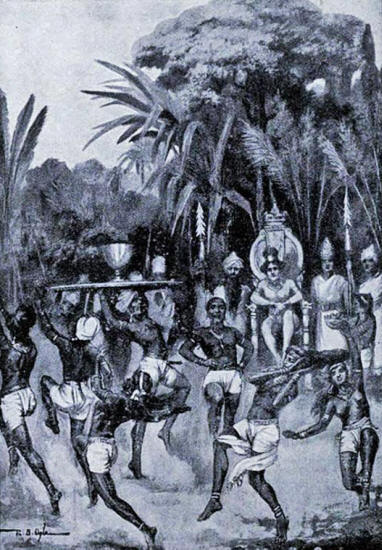|
from Ancient-Origins Website
Illustration of Unknown Hooded men. (wallpapercave.com)
Believed to have been formed over 2000 years ago, the Nine Unknown Men is widely suspected of manipulating political and societal trends in order to further the personal goals of the Nine.
But is such a secret
organization a reality or is it merely the stuff of legend?
Grandson of the legendary Emperor who unified the Indian subcontinent, Chandragupta, Ashoka was anxious to uphold his grandfather's legacy and maintain the empire.
In the region between Calcutta and Madras, the Kalingan's resisted the imperial rule, leading to an all-out war. Ashoka's vastly superior forces are said to have killed over 100,000 of Kalinga's warriors and deported over 150,000 of the region's villagers.
Even though he had won the war, Ashoka was aghast at the carnage such a victory entailed.
From then on, he swore
off violence forever. An Indian relief that may depict Ashoka in the center. From Amaravati, Guntur district, India.
(CC BY SA 3.0)
His efforts contributed to Buddhism's later rise in China, Nepal, Tibet, and Mongolia. Ashoka was a sworn vegetarian but did not force others to do likewise. Indeed, he was incredibly tolerant of other religious sects.
He did, however, prohibit
the consumption of alcohol.
So committed was the Emperor to this mission that he sought to prevent his fellow man from putting their intelligence towards perpetrating evil, particular the evil involved with warfare.
The task of collecting, preserving, and containing all knowledge was too great for one emperor to do alone, not the least because of the other duties required by ruling an empire.
So Ashoka summoned nine of the most brilliant minds in India at the time. For security purposes, the identity of these men was never made public.
Together, these geniuses
formed a secret society that came to be known as the Nine Unknown
Men. Ashoka's envoy declares peace. Illustration from Hutchinson's Story of the Nations.
(Public
Domain)
Fearing that if ordinary men were given scientific knowledge they would use it for destruction, only the Nine Men were allowed to study and develop scientific theories and technology.
To better accomplish this daunting task, each of the nine was charged with a specific book that he was to update, revise, and ultimately perfect the knowledge therein.
When one of the nine could no longer complete the task - whether from the wish to retire, fading health, or death - the obligation was passed to a chosen successor.
The number of members in the society was always to be nine.
Thus the society of the
Nine Unknown Men has allegedly lived on for over 2000 years.
Talbot Mundy, an English writer, published a book entitled The Nine Unknown Men in 1923, which contained a list of the nine books.
This list has come to be generally accepted.
Fact or Myth?
But were the Nine Unknown Men real?
Ashoka may very well have asked nine men of unknown identity to gather scientific knowledge, particularly with regards to its application to warfare. This was a very fractious time and other Emperors have been known to order similar initiatives.
These men may have explored different empires' battle tactics and training, weapons manufacturing, horse/elephant handling, and maybe even gunpowder usage.
However, an ancient group living on in secrecy for over 2000 years, controlling global events from the remote jungles of India with not a hint of modern equipment, infrastructure, or technology is hard to believe.
For many, the legend is
most likely just a legend...
|




